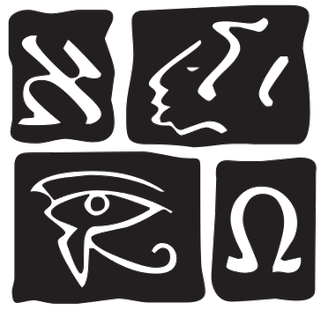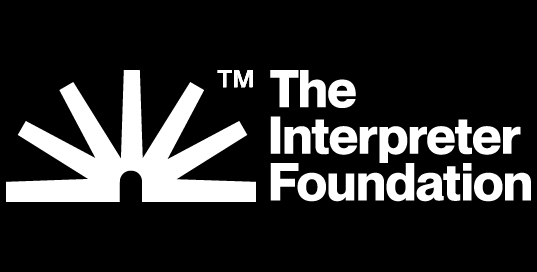
Alphabetical by Author
See the icons used for the links to the available media types for an article
Search the FARMS Bibliography
Advanced Search of the FARMS Bibliography
This form allows you to perform an advanced search. You only need to fill in one field below. This can be any field. If you select "not" as your match criteria, you must select at least one other field.
Citations with multiple authors are listed multiple times, once under each author’s name
Elder Dallin H. Oaks addresses the arguments of those who term themselves believing Latter-day Saints yet advocate that Latter-day Saints should “abandon claims that [the Book of Mormon] is a historical record of the ancient peoples of the Americas.” The argument that it makes no difference whether the Book of Mormon is fact or fable is surely a sibling to the argument that it makes no difference whether Jesus Christ ever lived.
In recent years the idea has been promoted that the Book of Mormon should be viewed as a great moral work but not as the actual history of peoples in the Americas. In this paper, Elder Dallin H. Oaks of the Quorum of the Twelve Apostles defends the historicity of the Book of Mormon from the standpoint of faith and revelation. He demonstrates that scholarship cannot create faith and that secular evidence will never be able to prove or disprove the Book of Mormon. He also illustrates how the burden of negative proof lies squarely on the shoulders of skeptics, how God values the witness of revelation more than the witness of man, and how historians’ methodologies are unable to sufficiently account for the Book of Mormon.
The Book of Mormon prophets were intentionally plain in their language even when using figurative language; they generally avoided using obscure figures with hidden meanings. In this paper, Kelly Ogden lists metaphors used in the Book of Mormon along with the plain definitions the prophets gave to explain the figurative language they used. Ogden notes that when teaching doctrine the prophets would often repeat concepts using different words so the people could not misunderstand.
More than ten years ago, Stephen Ricks and John Tvedtnes presented a case for interpreting the Book of Mormon proper noun Zarahemla as a Hebraic construct meaning “seed of compassion” or “child of grace, pity, or compassion.” The authors theorized: It may be that the Mulekite leader was given that name because his ancestor had been rescued when the other sons of King Zedekiah were slain during the Babylonian conquest of Jerusalem. [See Mosiah 25:2.] To subsequent Nephite generations, it may have even suggested the deliverance of their own ancestors from Jerusalem prior to its destruction or the anticipation of Christ’s coming.
The literary sophistication of the Book of Mormon is manifest at all levels of the text: vocabulary, rhetoric, narrative, and structure. A prime example of this craftsmanship is the concept of ethnicity, that is, how different social groups are defined and distinguished in the record. Nephi defines ethnicity by four complementary concepts: nation (traditional homeland), kindred (descent group), tongue (language group), and people (covenant community). While all four concepts are relevant to the Nephite record, people predominates. The term people is by far the most frequently used noun in the Book of Mormon and is the basis of a distinctive covenant identity given by God to Nephi. Following God’s law was the essential condition of this covenant and the basis of most of the sermons, exhortations, commentary, and other spiritual pleas of this sacred record. The covenant of the chosen people accounts for much of what befalls the Nephites and Lamanites, positive and negative, in this history. Mormon and Moroni follow Nephi’s covenant-based definition of ethnicity in their respective abridgments of the large plates of Nephi and the plates of Ether.
Book of Mormon Scriptures > Moroni
The symbolism of land and its covenantal associations are viewed as guiding structural elements in the Book of Mormon narrative. Involving “existential space” more than “geometric space,” the concept of land is central to an understanding of the book as a sacred, covenant-based record.
This article approaches the narrative of Laban’s death using literary criticism and studies how Nephi’s use of specific words and phrases offers additional insight to this story.
Remember is one of the most frequently used verbs in the Book of Mormon. It is consistently used by its authors in a covenant context—establishing or renewing an eternal relationship with God, expressing and realizing the blessings of the gospel of Jesus Christ, and preserving the distinctive identity of a covenant people. The present study examines the complex and profound ways that the complementary concepts of memory, identity, and covenants express the meaning of the sacred Nephite history through the vocabulary and narrative structures of the text and postulates how and why the Nephites preserved this official record for posterity.
Utilizing techniques adapted from literary criticism, this paper investigates the narrative structure of the Book of Mormon, particularly the relationship between Nephi’s first-person account and Mormon’s third-person abridgment. A comparison of the order and relative prominence of material from 1 Nephi 12 with the content of Mormon’s historical record reveals that Mormon may have intentionally patterned the structure of his narrative after Nephi’s prophetic vision—a conclusion hinted at by Mormon himself in his editorial comments. With this understanding, readers of the Book of Mormon can see how Mormon’s sometimes unusual editorial decisions are actually guided by an overarching desire to show that Nephi’s prophecies have been dramatically and literally fulfilled in the history of his people.
Nephi and Mormon both treat the covenant of the promised land, expounding on characteristics of prospering in the land: obeying God’s law, practicing domesticated economies, preserving sacred records, bearing and raising children, securing adequate defense, constructively using natural materials, worshipping at temples, requiring industriousness, and providing righteous leadership.
Olsen explains why historical documentation is essential to the Church of Jesus Christ of Latter-day Saints.
Insights can be gained by considering the eight-year wilderness sojourn of Lehi’s company through the eyes of the women who were there. Leaving the comforts of civilization for the difficulties of the desert would have been very challenging. While the record in 1 Nephi mentions nine women, Sariah was the only one identified by name. Nephi records Sariah’s struggles as well as her testimony. The record of the women in 1 Nephi communicates much about the need to seek and receive one’s own witness of truth.
Review of Zion in the Courts: A Legal History of the Church of Jesus Christ of Latter-day Saints, 1830-1900 (1988), by Edwin B. Firmage and Richard C. Mangrum
This article addresses the belief that the account of secret combinations in the Book of Mormon is a satire on Masonry. Many scholars claim that the term secret combinations was exclusively used in the 1820s to refer to Masonry. However, Nathan Oman points out that this term was also used in legal situations to refer to criminal conspiracies.
Blake Ostler examines what relationship exists between the papyri of the ancient Egyptian Book of Breathings possessed by Joseph Smith and the Book of Abraham. Ostler finds that Joseph Smith, in associating vignettes of the Book of the Dead to explain Abraham’s experiences, was actually duplicating an ancient practice about which he could not have known from secular sources available in his day.
Review of How Wide the Divide: A mormon and an Evangelical in Conversation (1997), by Craig L. Blomberg and Stephen E. Robinson
The Book of Mormon displays examples of ceremony or ritual that accurately reflect the ritual tradition followed by the ancient Israelites. Many similarities are found, in addition to some differences. It is highly unlikely that any person could accurately write about Israel’s rituals and covenants without having been directly and intimately familiar with them.
Review of Carl Mosser. “Can the Real Problem of Evil Be Solved?” in The New Mormon Challenge: Responding to the Latest Defenses of a Fast-Growing Movement
Review of The Mormon Concept of God: A Philosophical Analysis (1991), by Francis J. Beckwith and Stephen E. Parrish
Review of Paul Copan and William Lane Craig. “Craftsman or Creator? An Examination of the Mormon Doctrine of Cration and a Defense of Creatio ex nihilo.” and Review of Paul Copan and William Lane Craig. Creation out of Nothing: A Biblical, Philosophical, and Scientific Exploration.
Review of How Wide the Divide: A mormon and an Evangelical in Conversation (1997), by Craig L. Blomberg and Stephen E. Robinson


